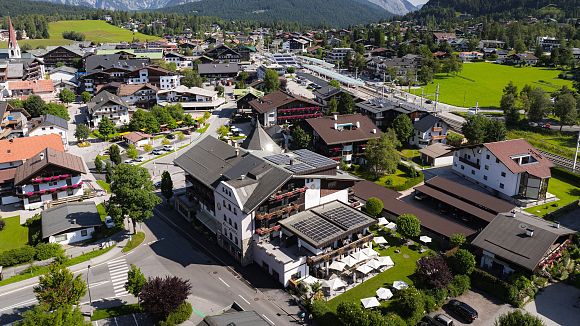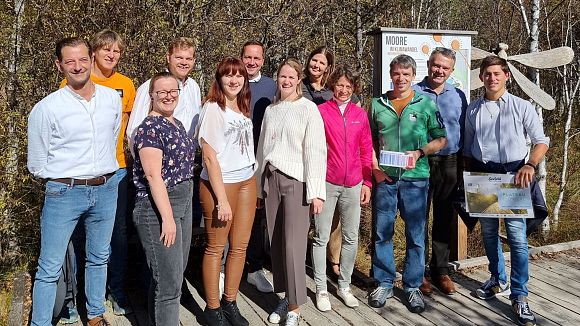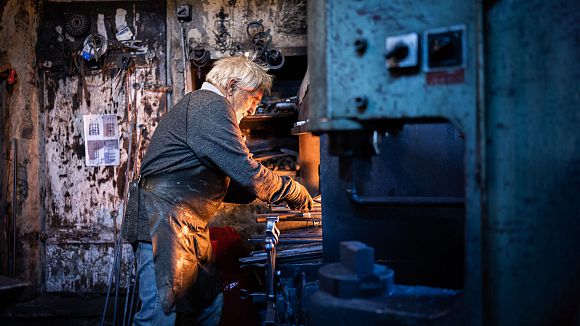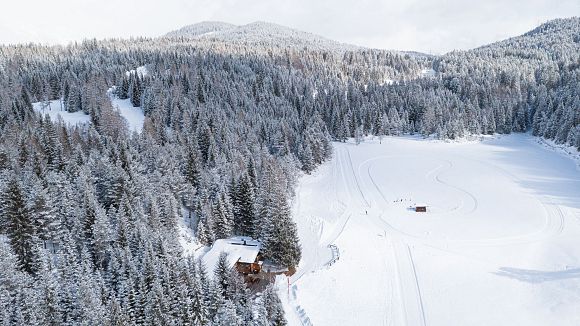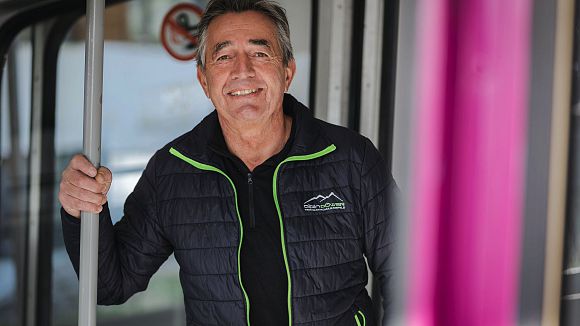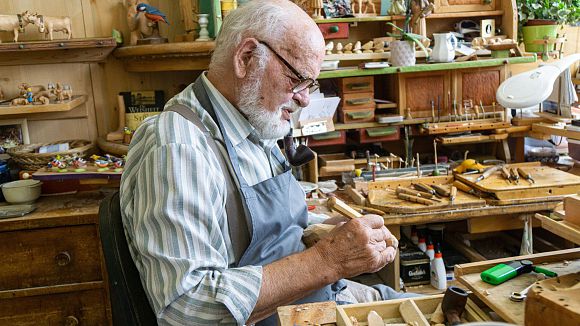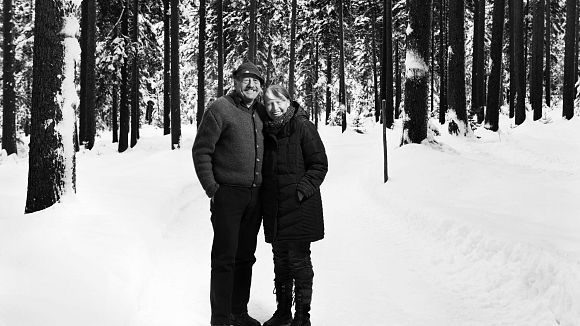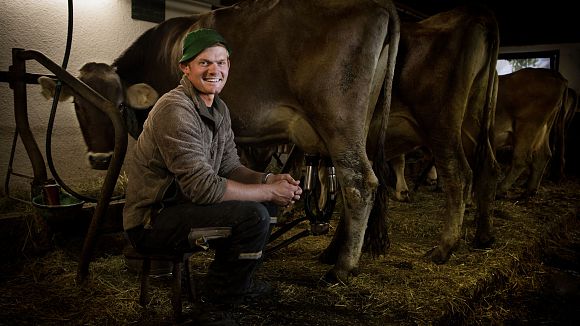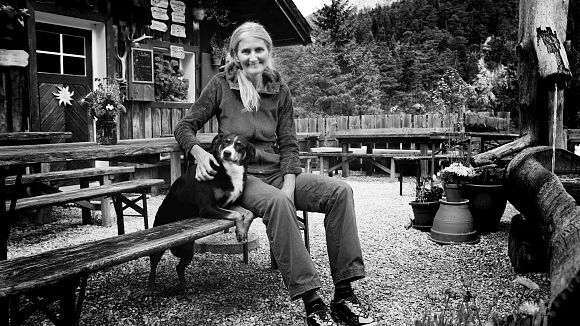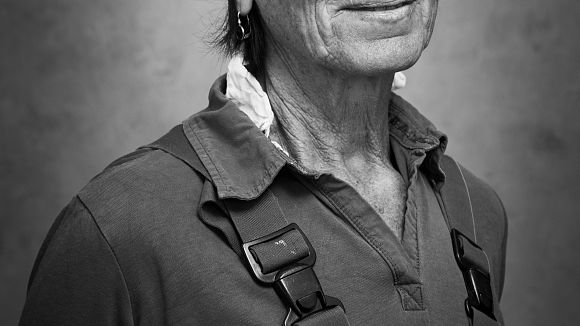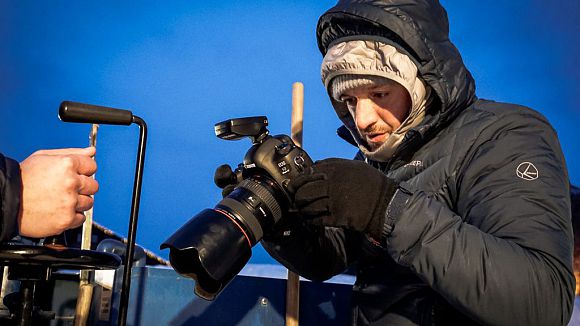
von Kathrin Ebenhoch
September 28, 2023
Ganghofer-Hubertus Week
Cohesion and critical exchange
At the Ganghofer-Hubertus Week, the focus is on friendship, cohesion and the critical examination of nature, hunting and forestry topics.
Getting together, hiking into the golden autumn, exchanging ideas and learning and experiencing new things - that is the special autumn gift that Hans and Monika "Bantl" Neuner give their guests every year at the Ganghofer Hubertus Week in Leutasch. And they have been doing so for 24 years now. The pin, which is given to all hard-working participants at the end of the week, is not so much an earned badge as a symbol of a week full of friendship. No surprise, that many guests, such as Horst Hoppe, already wear 23 of them on their hats.
Welcome right away!
"We really look forward to it all year round," is the first thing the regulars tell me when I join them as a Hubertus Week newcomer at the Neuleutasch car park. The sun is just rising, letting the dew rise from the meadows and bathing the colourful autumn leaves in warm morning light. The warm, friendly atmosphere that greets me at the car park is not only due to this wonderful natural spectacle. I am immediately welcome, immediately a member of the group. Today, the group consists of about 40 participants, almost all of whom have known each other for a long time, know each other's strengths and weaknesses and share them. "Good morning, how are you, did you cope well with yesterday's tour?" "Oh hello, nice to have you back today, how was your trip yesterday?" These sentences are not empty phrases here. Maybe that's why some of the guests continue to come even when they're over 80 years old. "Leutasch and the Hubertus Week offer so many opportunities even in old age," enthuses Rosi Berz, one of the oldest participants at the age of 83.

Kathrin Ebenhoch at the Ganghofer-Hubertus Week
Pointers and culinary delights
Hans and Monika's goal is to be there for everyone and take them with them. That's why during the Ganghofer Hubertus Week there are longer hikes with a lot of altitude, like the one to Puitegg, but also leisurely walks, two masses for Thanksgiving and in honour of St. Hubert, as well as numerous get-togethers for food, drink and a "Hoangart". The " Culinarium" we are setting out for today is a mixture: a short hike, at the end of which the former "Naturwirt" Hans-Peter Auer prepares "Leutascher Wildgröstl mit Spiegelei" ("Leutascher Wild Gröstl with fried egg") over an open fire. On the way, Hubertus-Week founder Hans explains the flora and fauna of the region and repeatedly lets his humorous punchlines flow in. Thus, "Where there's plenty of manure, there's Christ" sticks in my mind, which means nothing other than that manure for fertilising used to be a valuable commodity.
As we approach the hut, we can already hear the fried eggs sizzling in the pan and a delicious smell is in the air. The food, all organic and regional, tastes like Leutasch, like home and real - a pleasure that you rarely get on your plate these days. After the first plates are empty, it's time for the Hoangarten (ratchet). Andrea and Herijo Fescharek, who have travelled all the way from Rieseby (north of Kiel), have been coming to the Hubertus Week for ten years. The first time was pure coincidence, she says. "We were just visiting my family in Telfs, and just added the week on," says Andrea, who has Tyrolean roots but moved to Hamburg in her childhood. "We've been coming back ever since." And this despite the fact that, like so many participants, they have nothing to do with hunting or forestry, either professionally or privately.
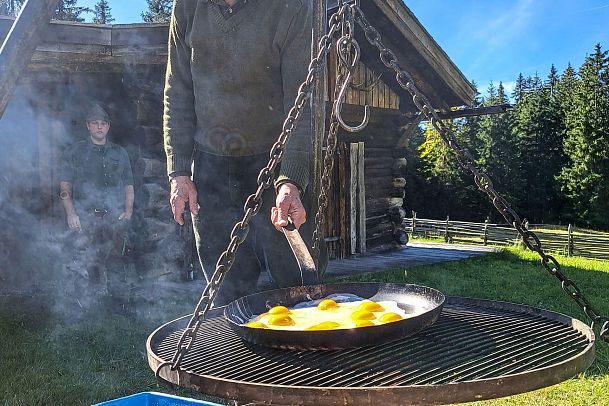


The true meaning of hunting
Although the name Ganghofer-Hubertus Week and the programme have their roots in hunting and forestry, the week is much more than a meeting of hunters and foresters. It is a week that is about nature as our habitat. It explains what nature, animals and climate mean to us humans and how important hunters and foresters are as regulators. They are not, as is often suggested today, the bad guys who cut down living trees or shoot Bambi, but the good guys who closely observe and care for our habitat. Hans, a former professional hunter and hiking and tour guide for many years, therefore deliberately seeks exchange and would like to see locals or tourism employees also taking part in the weekly programme. I can only agree with him, because I have rarely learned so much about my homeland as I did during my two days of Hubertus Week.
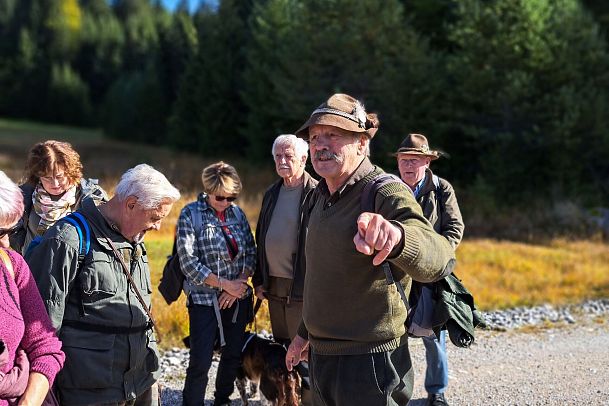

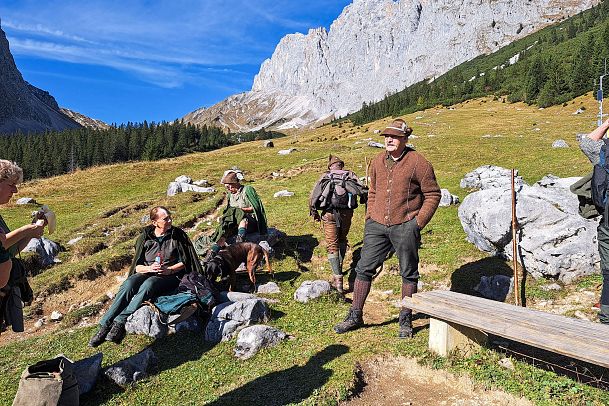
On my second day of Hubertus Week, the hike to Puitegg is on the agenda. The morning greeting at the car park lovingly shows that I have become part of the group: "Hi Kathrin, how are you? Gröstl well digested?". The group that sets off on the almost 4-hour tour is much smaller and almost exclusively made up of experts. Forester Dirk Schmidt from Hesse, butcher and hunter Holger Ewald from Frankfurt and hunter Röbi Walser from St. Gallen had already caught my eye on the first day: Their green clothing and their hunting dogs had given them away. All three have been at the Hubertus Week for many years. Röbi had already visited Gaistal for the first time in 1955 and has been friends with Hans since his youth. Holger has somehow grown up with Bantls. "For me it's really emotional here, a bit like my second family".
Local inspection Puitegg - Climate change in the Alps
The composition of the group determines the topics at Puitegg: While humour, togetherness and long-time regulars were in the foreground at the cosy culinary event, up here between the craggy rock faces of Leutascher Dreitorspitz and Gehrenspitze it is the serious topics: climate change, its influence on game and forest and the possible consequences for us humans in the coming decades. Hans invited Michael Deutsch, the former person in charge of the hunting ground at Puitegg, to join him. Michael and Hans provide detailed insights that do not dampen the beautiful autumn day and the dreamlike hike into one of the more unspoilt spots in the Leutasch Valley, but they do make us think a lot. "The higher temperatures are making life difficult for the rock deer, like the chamois, and threatening them," explains Deutsch. There are many reasons for this, he says: Their thermo-hair means, for example, that they can no longer feed during the day, but can only rest in the shade. The increasing, fast-growing vegetation also narrows the habitat above the tree line and no longer has nearly the same nutritional value. So the rock deer take refuge in the forest, which leads to increased browsing. "But the warmer temperatures endanger the forest anyway," says forester Schmidt. "Parasites like the bark beetle live at ever higher altitudes and could cause similar damage in the Alps in 20 years as they are currently doing in the German lowlands, where tens of thousands of hectares of forest have to be felled." Considering the great protective function of the forest in our valleys, this is a real and very concrete danger for us humans. The problem is above all the speed of change, for which our actions are clearly responsible, everyone agrees. Because this deprives nature and animals of the chance to adapt.



The questions and issues raised will occupy me for a long time to come. But also the impressions of the day - from the morning dew and the wisps of mist to the golden glow of the alpine meadows and the smell of the damp forest - remain in my memory. Just like the strong sense of community that unites different generations, professions and regions of origin at Hubertus Week. Perhaps this is exactly what is needed for a sustainable change in our society.

Group photo of all participants at the Ganghofer-Hubertus Week
Important: In 2023 the Ganghofer Hubertus Week will take place for the 25th time. Unfortunately, the anniversary week from 1 to 7 October is also its last edition due to age. However, Hans and Monika "Bantl" Neuner will continue to look after the Leutascher Mountain Spring Days and the Leutascher Chapel Advent. Many of the themes of the Hubertus Week will be taken up again, especially during the Mountain Spring Days.
Share

